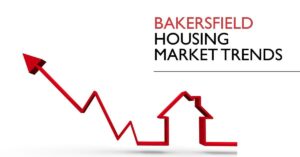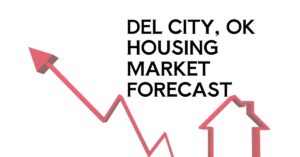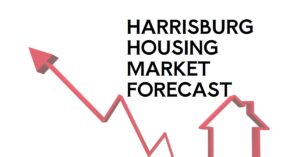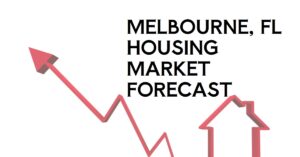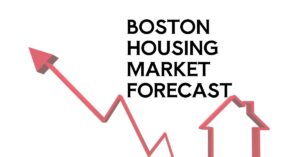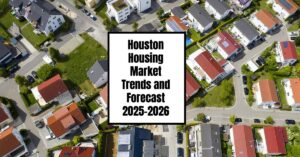If you're thinking about buying or selling a home in Santa Cruz, you're probably wondering what's going on with the market. The short answer? The Santa Cruz housing market is competitive, with the median sale price hovering around $1.2 million as of January 2025. While that's still a hefty price tag, it's actually down 8.3% compared to last year. Let's dive into the specifics and figure out what this means for you.
Current Santa Cruz Housing Market Trends: What's Happening Now?
Home Sales in Santa Cruz
One of the biggest changes in the Santa Cruz market is the increase in home sales. According to Redfin, in January 2025, there were 21 homes sold, which is a whopping 90.9% increase compared to the same time last year. This might indicate a shift in buyer confidence, or simply that more inventory is coming onto the market, giving buyers more options.
Home Prices in Santa Cruz
Let's talk numbers. As I mentioned, the median sale price of a home in Santa Cruz in January 2025 was $1,200,000. While this is a decrease of 8.3% year-over-year, it’s important to remember that Santa Cruz remains an expensive place to live. The median sale price per square foot is $1.11K, up 32.0% since last year. This suggests that while overall prices might be softening slightly, the value per square foot is still increasing, likely driven by demand for smaller or updated properties.
Here's a quick overview:
| Metric | January 2025 | Year-over-Year Change |
|---|---|---|
| Median Sale Price | $1,200,000 | -8.3% |
| Number of Homes Sold | 21 | +90.9% |
| Median Days on Market | 66 | +28 |
| Sale-to-List Price | 98.6% | -5.8 pt |
| Homes Sold Above List Price | 19.0% | -26.4 pt |
Are Home Prices Dropping in Santa Cruz?
Yes, to a degree. The data shows an 8.3% decrease in median sale price year-over-year. However, don't expect a massive crash. The Santa Cruz market is unique, with high demand and limited inventory. It's more likely we'll see a gradual adjustment rather than a dramatic price collapse. Several factors contribute to the persistent high prices in Santa Cruz. It has a desirable coastal location, coupled with a strong local economy (driven in part by the University of California, Santa Cruz) makes it a popular place to live. This sustained demand helps keep prices elevated, even in the face of broader market fluctuations.
Comparison with Current National Median Price
The national median home price in December 2024 was around $407,500, with a year-over-year change of +6%. This starkly contrasts with Santa Cruz's $1.2 million median price. While the national market is experiencing moderate growth, Santa Cruz remains significantly more expensive. The premium you pay to live in Santa Cruz is driven by factors like its proximity to the beach, the vibrant culture, and the overall desirability of the area.
Housing Supply in Santa Cruz
The number of homes for sale, also known as housing inventory, plays a big role in determining market conditions. Unfortunately, I don't have specific data on the current inventory levels in Santa Cruz. However, the increase in homes sold (90.9% year-over-year) suggests that more properties are becoming available, which could be helping to moderate price increases. Even so, I believe that Santa Cruz is a desirable location and the supply side will always be constrained by local topography and lack of buildable land.
Is It a Buyer's or Seller's Housing Market in Santa Cruz?
Santa Cruz is still leaning towards a seller's market, but the scales are starting to balance. While many homes still get multiple offers, the data indicates that homes are staying on the market longer and that fewer properties are being sold above the list price. Homes are selling in 44 days, which is still reasonably quick, but is slower compared to the recent past. With a Redfin Compete Score™ of 72, the Santa Cruz housing market is classified as very competitive. This means that while there's still strong competition among buyers, they might have slightly more negotiating power than they did a year ago.
Market Trends in Santa Cruz
Several key trends are shaping the Santa Cruz housing market:
- Increased Days on Market: Homes are taking longer to sell, giving buyers more time to consider their options. In January 2025, homes in Santa Cruz sold after 66 days on the market compared to 38 days last year. This shift is due to the fact that interest rates are still high.
- Lower Percentage of Homes Sold Above List Price: While bidding wars still happen, they're becoming less common. 19.0% of homes sold above list price, which is a significant decrease of 26.4 percentage points year-over-year.
- Migration Patterns: Interestingly, a significant portion of Santa Cruz homebuyers are looking to move out of the area. Between November 2024 and January 2025, 26% of Santa Cruz homebuyers searched to move elsewhere, with Sacramento being the most popular destination. Honolulu homebuyers searched to move into Santa Cruz more than any other metro followed by Knoxville and Santa Barbara.
- Sale-to-List Price Ratio: The sale-to-list price ratio of 98.6% indicates that homes are selling for slightly below the asking price. This trend suggests that sellers are now slightly more open to negotiations.
Impact of High Mortgage Rates
High mortgage rates, currently hovering around 7% (as of February 2025), are undeniably impacting the Santa Cruz housing market. These elevated rates make it more expensive to borrow money, which reduces buyer affordability. This can lead to a decrease in demand, causing homes to stay on the market longer and putting downward pressure on prices.
It's a tricky situation: Rates are unlikely to plummet overnight. However, if you have a longer investment horizon, the real estate value can appreciate, and interest rate drops can be capitalized on with refinancing options.
My Two Cents
Based on the data, my professional opinion is that now might be a good time for buyers to consider entering the Santa Cruz market. With prices slightly down and homes staying on the market longer, buyers have more room to negotiate. However, it's still crucial to be prepared with pre-approval and a solid understanding of your budget.
For sellers, it's essential to price your home competitively and make any necessary repairs or upgrades to attract buyers. Work closely with a local real estate agent who understands the nuances of the Santa Cruz market to develop a winning strategy. I would strongly recommend enlisting the services of a seasoned realtor in the region.
Santa Cruz Housing Market Forecast: What's Next for Home Prices?
According to the latest Santa Cruz housing market forecast, don't expect any big jumps or drops. Zillow predicts a slight dip of -0.1% by February 2025 and the same over the year through January 2026. While it is not a housing market crash, let's dive deeper and see what's in store and what this means for you.
What's Driving the Santa Cruz Housing Market?
As someone who's been keeping a close eye on the California real estate scene for years, I can tell you that the Santa Cruz housing market is unique. It's a blend of factors, including its desirable coastal location, strong tech presence, and limited housing supply. All these factors often push prices up, but the current economic climate adds another layer of complexity. Rising interest rates and concerns about a potential recession are definitely weighing on buyers' minds, leading to a more cautious approach.
Santa Cruz Housing Market Projections: A Closer Look
Here's a breakdown of Zillow's projections as of January 31, 2025. Remember, forecasts are not guarantees, but they give us a reasonable expectation based on current trends.
| Forecast Period | Expected Home Value Change |
|---|---|
| February 2025 | -0.1% |
| April 2025 | 0.0% |
| January 2026 (Year-over-Year) | -0.1% |
These figures suggest a relatively stable market, at least in the short term. The slight dip indicates that we're not likely to see the rapid price appreciation that was observed in previous years. In my opinion, the home prices have stabilized in Santa Cruz county.
How Does Santa Cruz Compare to Other California Markets?
It's always helpful to see how Santa Cruz stacks up against other cities in California. Here's a comparison, again based on Zillow's data:
| Region | Feb 2025 | Jan 2026 (YoY) |
|---|---|---|
| Santa Cruz | -0.1% | -0.1% |
| Stockton | 0.1% | 0.0% |
| Modesto | 0.1% | 0.5% |
| Santa Rosa | -0.1% | -1.9% |
| Santa Maria | 0.2% | 3.0% |
| Salinas | 0.1% | 1.0% |
| San Luis Obispo | 0.1% | 0.9% |
| Merced | 0.0% | 0.5% |
| Chico | -0.1% | -3.1% |
| Redding | 0.1% | -0.8% |
| El Centro | 0.6% | 1.2% |
| Yuba City | 0.0% | 0.1% |
As you can see, some markets are expected to see slight gains, while others, like Santa Rosa and Chico, are projected to experience larger declines. The Santa Cruz housing market seems to be somewhere in the middle, showing neither significant growth nor a major downturn.
Will Home Prices Drop in Santa Cruz? Will it Crash?
Based on current projections, a housing market crash in Santa Cruz seems unlikely. A crash would entail a drastic decline in home values, and the current forecast simply doesn't point to that. A slight downward trend is not a crash.
My Take on the Santa Cruz Market
I believe the Santa Cruz market will likely remain fairly stable over the next year. Inventory is still relatively low, which will support prices to some degree. However, affordability remains a significant challenge, and this will likely keep a lid on any major price increases. If interest rates remain elevated or rise further, we could see a slightly more pronounced slowdown.
Looking Ahead to 2026
While it's difficult to make precise predictions that far out, my gut feeling is that the Santa Cruz housing market will continue to be influenced by the same core factors: location, economy, and interest rates. A lot can change in a year, but for now, I'd expect a gradual and moderate pace of change, rather than any dramatic shifts.


